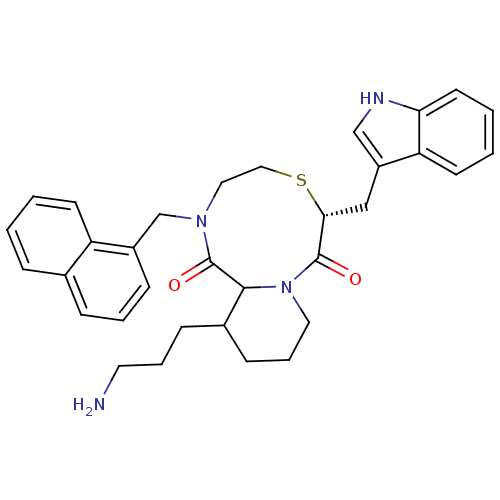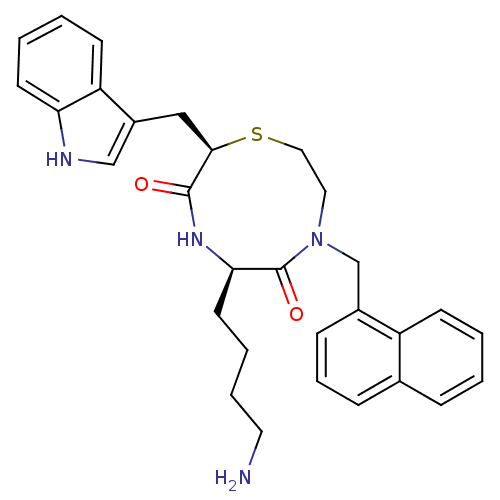Affinity DataIC50: 41nMAssay Description:Inhibitory concentration required for somatostatin 4 receptor in radioligand binding assay ([125I]-Tyr11-SRIF)More data for this Ligand-Target Pair
Affinity DataIC50: 41nMAssay Description:Inhibitory concentration required for somatostatin 5 receptor in radioligand binding assay ([125I]-Tyr11-SRIF)More data for this Ligand-Target Pair
Affinity DataIC50: 87nMAssay Description:Inhibitory concentration required for somatostatin 5 receptor in radioligand binding assay ([125I]-Tyr11-SRIF)More data for this Ligand-Target Pair
Affinity DataIC50: 275nMAssay Description:Inhibitory concentration required for somatostatin 2 receptor in radioligand binding assay ([125I]-Tyr11-SRIF)More data for this Ligand-Target Pair
Affinity DataIC50: 407nMAssay Description:Inhibitory concentration required for somatostatin 1 receptor in radioligand binding assay ([125I]-Tyr11-SRIF)More data for this Ligand-Target Pair
Affinity DataIC50: 501nMAssay Description:Inhibitory concentration required for somatostatin 1 receptor in radioligand binding assay ([125I]-Tyr11-SRIF)More data for this Ligand-Target Pair
Affinity DataIC50: 1.05E+3nMAssay Description:Inhibitory concentration required for somatostatin 4 receptor in radioligand binding assay ([125I]-Tyr11-SRIF)More data for this Ligand-Target Pair
Affinity DataIC50: 1.26E+3nMAssay Description:Inhibitory concentration required for somatostatin 3 receptor in radioligand binding assay ([125I]-Tyr11-SRIF)More data for this Ligand-Target Pair
Affinity DataIC50: 1.59E+3nMAssay Description:Inhibitory concentration required for somatostatin 2 receptor in radioligand binding assay ([125I]-Tyr11-SRIF)More data for this Ligand-Target Pair
Affinity DataIC50: 3.09E+3nMAssay Description:Inhibitory concentration required for somatostatin 3 receptor in radioligand binding assay ([125I]-Tyr11-SRIF)More data for this Ligand-Target Pair


